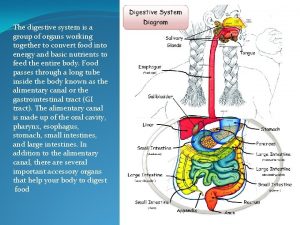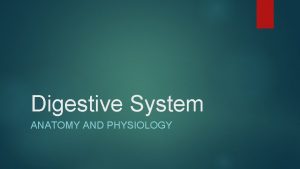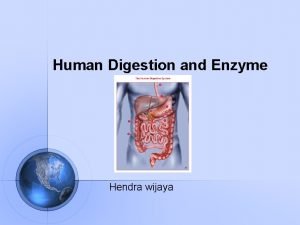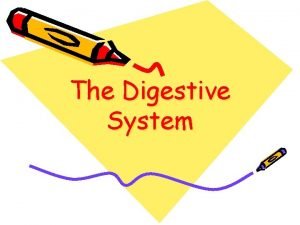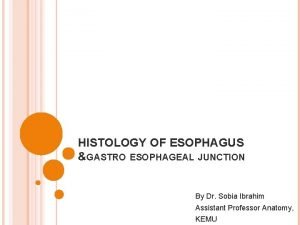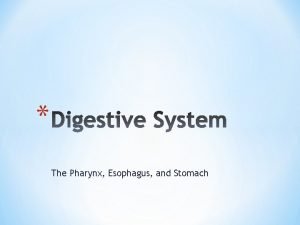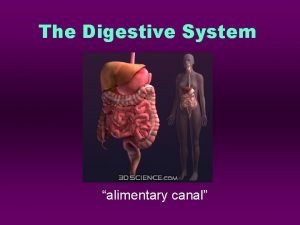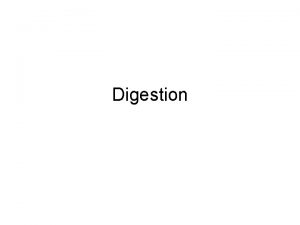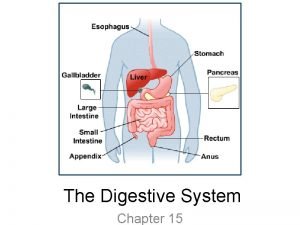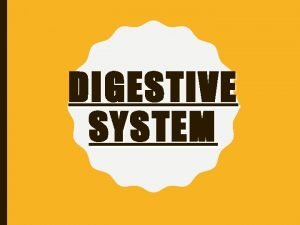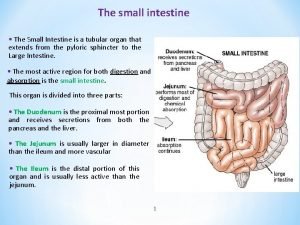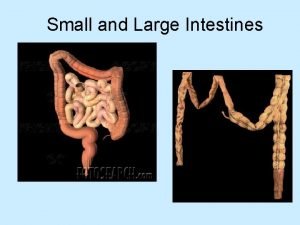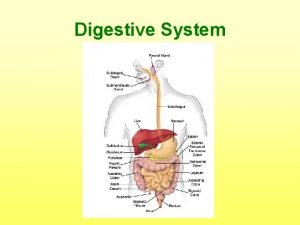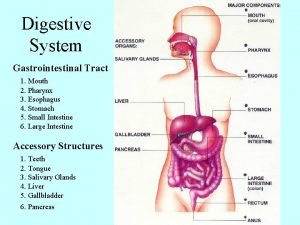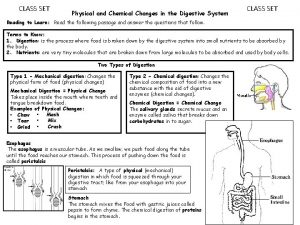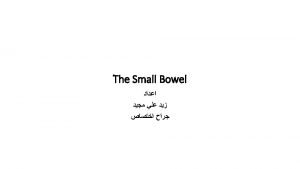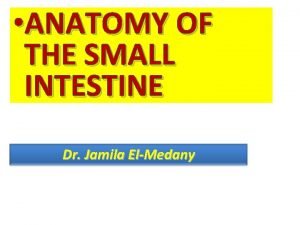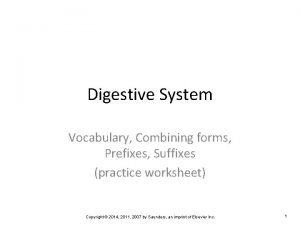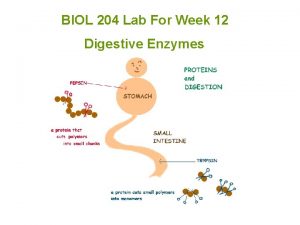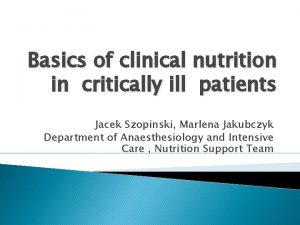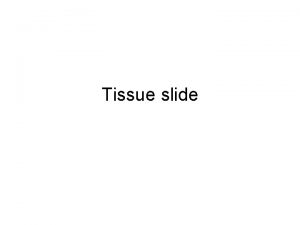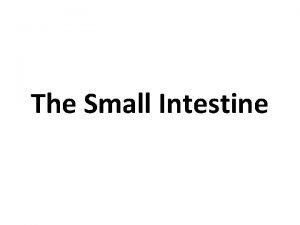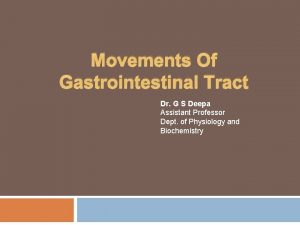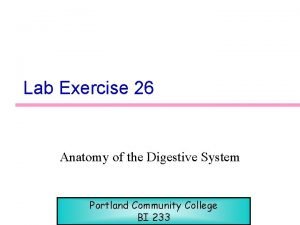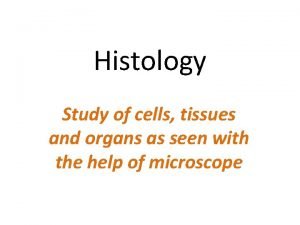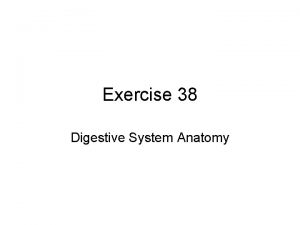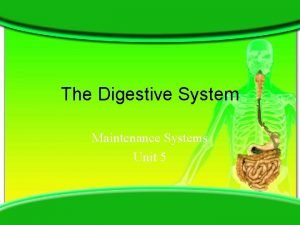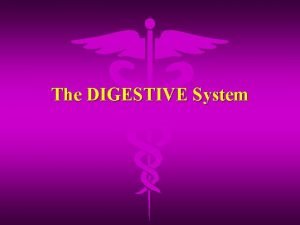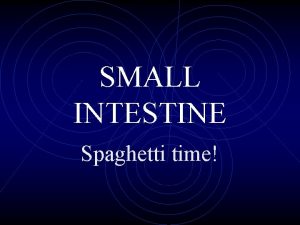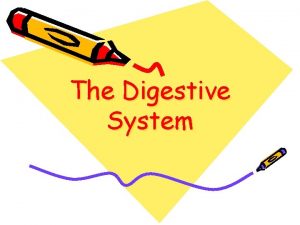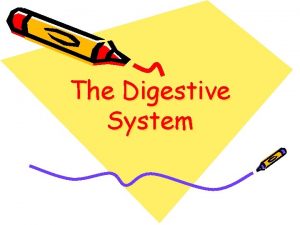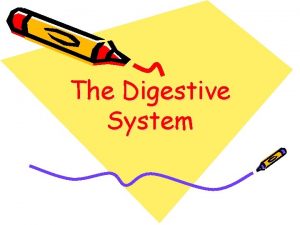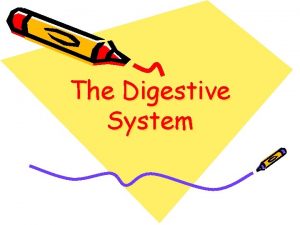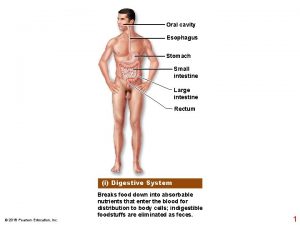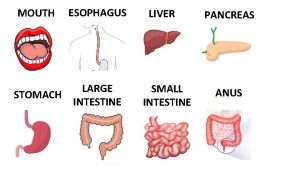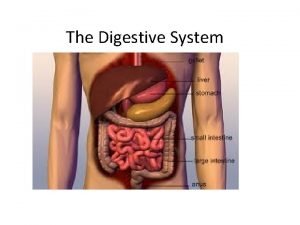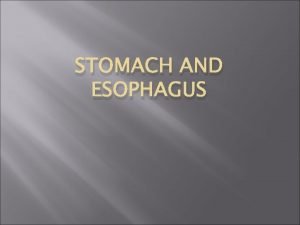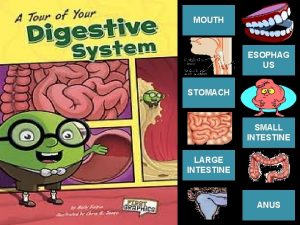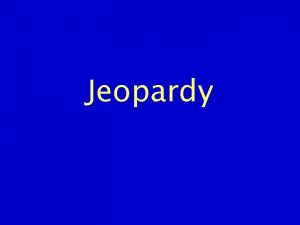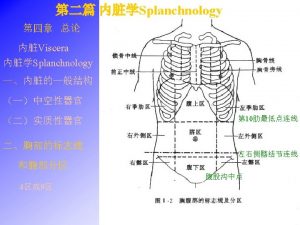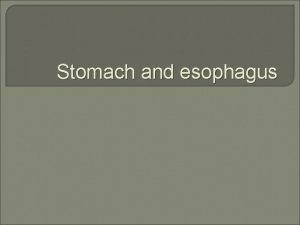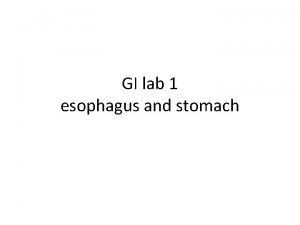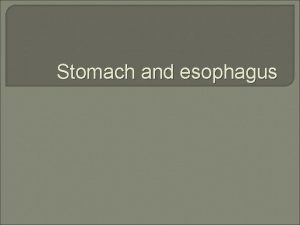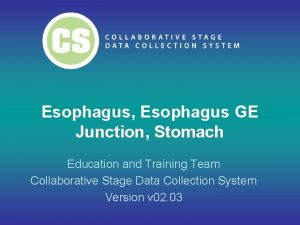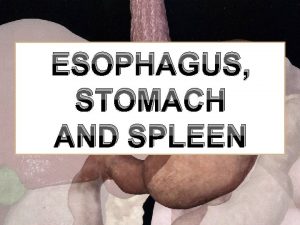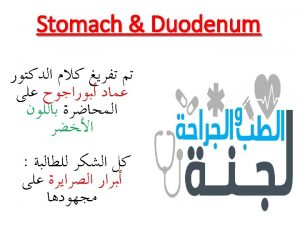The Digestive System Components Esophagus Stomach Small Intestine

































- Slides: 33

The Digestive System

Components • • Esophagus Stomach Small Intestine Large Intestine Gall bladder Liver Pancreas

The Digestive System

Functions of the digestive system • Ingestion • Mechanical processing • Digestion • Secretion • Absorption • Excretion

Esophagus • the tube that connects your mouth and your stomach • Mechanical

Stomach • A stretchy bag that holds your food after you eat • J shaped • Helps to break food into smaller pieces so your body can use it for energy and nutrition • Chemical

Esophagus Stomach

Small Intestine • Tube that is 20 feet long. • Continues to digest food • Food stays in your small intestine for 4 to 8 hours • Absorption of nutrients

Small Intestine

Large Intestine • Tube that is 5 feet long • Gets waste from small intestine • Waste stays for 10 to 12 hours • Removes water

Large Intestine

Gall Bladder • Storage tank for bile (a greenishyellow liquid) that helps your body break down and use fats • Located under your liver • Shaped like a pear

Gall Bladder

Liver • Factory for antibodies and bile • Stores vitamins and sugars until your body needs them

Liver

Pancreas • Helps you digest food by breaking down sugars

Functions • Digest the food we eat • Take the nutrients out of your food so your body can use it

Healthy Habits • Eat foods that are high in fiber like fruits and vegetables

• Drink plenty of water

• Chew your food completely before you swallow

Avoid foods high in fat

Interesting Facts • Food is in your digestive system for about 24 hours

• Your stomach stretches when you eat like a balloon being filled with air

• You have a trap door called the epiglottis to cover your windpipe when you swallow.

• Your stomach mashes your food the way a baker kneads dough for bread.

Review • Brain-You think about food and start to salivate • Mouth – Crushing and grinding • Stomach – Chemical Breakdown • Small Intestine – Useful material extracted • Colon – Water removal

Digestive Organ’s Functions • Salivary Gland • There are three main glands that deliver saliva to soften the food • Epiglottis • This is a trap door that covers the trachea to prevent food and fluids from draining into the lungs • Esophagus • This is a muscular tube that takes the food to the stomach. The contractions are called PERISTALSIS • Stomach • This is where the food goes and gets melted into a thick soup by the GASTIC ACIDS

Digestive Organ’s Functions • Small Intestine • It has three parts, duodenum, jejunum and ileum. • Duodenum • Is responsible for continuing to break down of food • Jejunum • Absorbing nutrients into the blood stream • Iluem • Absorbing nutrients into the blood stream

Digestive Organ’s Functions • Pancreas • The body’s sugar control board. Produces insulin and glucagon • Liver • Food doesn’t pass through this organ, instead the liver secretes bile • Gall Bladder • Stores bile from the liver and releases bile into the duodenum • Appendix • We do not need our appendix, sometimes a piece of food gets stuck in here and causes an infection.

Digestive Organ’s Functions • Large Intestine • Also known as the colon. It has three major parts, ascending colon, transverse colon and descending colon. • Rectum • Part of the colon, used to store waste for disposal. • Gall Bladder • Stores bile from the liver and releases bile into the duodenum

Summary Functions • Digests food • Absorbs nutrients for the body • • Components Esophagus Stomach Small intestine Large intestine Pancreas Liver Gall Bladder

Summary Healthy Habits • • Eat high fiber foods Drink lots of water Chew food well Avoid high-fat foods

Works Cited • Microsoft Clip. Art • Microsoft Encarta Encyclopedia • My Body: Teacher Created Materials
 Esophagus stomach small intestine large intestine
Esophagus stomach small intestine large intestine Function of duodenum
Function of duodenum List of enzymes and their functions
List of enzymes and their functions Mouth esophagus stomach intestines
Mouth esophagus stomach intestines Esophageal gastric junction histology
Esophageal gastric junction histology Esophagus anatomy
Esophagus anatomy Rugae
Rugae Large intestine function in digestive system
Large intestine function in digestive system Main function of small intestine
Main function of small intestine Large intestine function in digestive system
Large intestine function in digestive system Mash, grind, mix and tear food.
Mash, grind, mix and tear food. The small intestine extends from the
The small intestine extends from the N
N Treitz ligament
Treitz ligament Diareherra
Diareherra Another name for small intestine
Another name for small intestine Physiology of small intestine
Physiology of small intestine Is the small intestine a physical or chemical change
Is the small intestine a physical or chemical change Blood supply small bowel
Blood supply small bowel Parts of small intestine
Parts of small intestine The membrane holds the coils of the small intestine
The membrane holds the coils of the small intestine Suffix pepsia
Suffix pepsia Frog parts and functions
Frog parts and functions Intestinal villus
Intestinal villus Small intestine
Small intestine Parts of small intestine
Parts of small intestine Small intestine villi function
Small intestine villi function Vomiting reflex
Vomiting reflex Histological structure of oesophagus
Histological structure of oesophagus Parts of small intestine
Parts of small intestine Overview of the digestive system
Overview of the digestive system Small intestine mechanical digestion
Small intestine mechanical digestion Plicae circulars
Plicae circulars Small intestine
Small intestine
